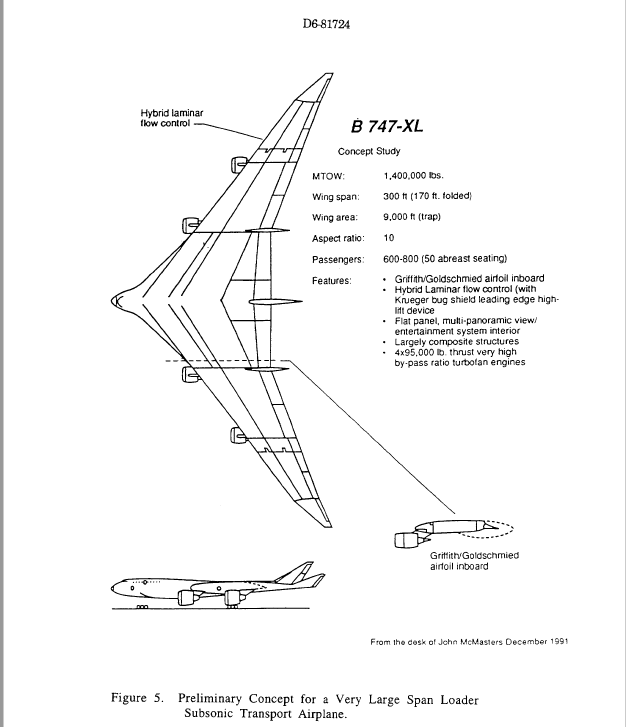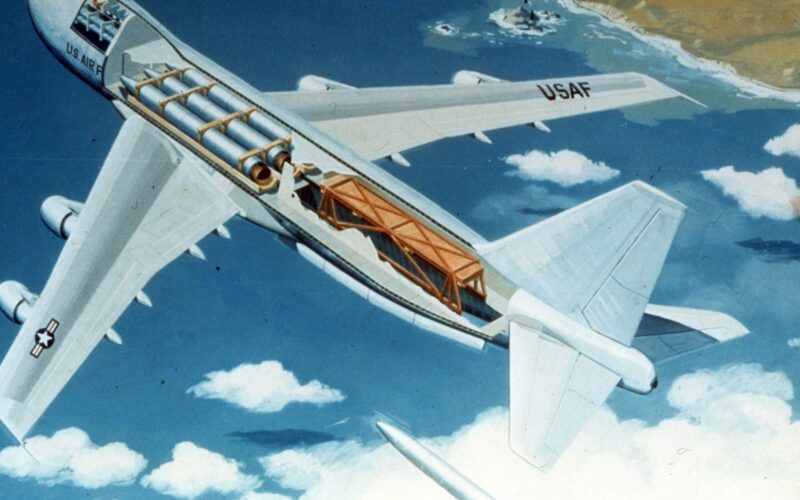The size and success of Boeing’s iconic 747 aircraft made it the perfect platform for a number of ambitious and, at times, strange modifications that would have completely altered its performance and look.
Some of these modifications succeeded, resulting in airborne aircraft which, if only for a while, managed to perform their new roles. But others failed to do so or were never intended to fly at all, having been part of alternative proposals to extend the scope of the 747’s operations.
So, to mark the completion of Boeing’s final delivery of its iconic Queen of the Skies, AeroTime bids farewell by taking a look at the strangest 747 proposals that were never flown.
Bonus: Skyfleet S570 prop and the Burning Man vehicle
While these two heavily modified 747s have never taken to the skies, it does not mean that they were not successful.
The Skyfleet S570 is the name of a fictional aircraft in the 2006 James Bond movie, Casino Royale. The aircraft was played by a 747 with its engines replaced by two dummy turbofan pods. In the film the aircraft featured further digital enhancements, while the physical prop, a former British Airways 747-200, remained parked at Dunsfold Aerodrome in Surrey, United Kingdom.
Another 747 was turned into an art project for the Burning Man festival in 2016. With its wings and tail cut off, it was transported to the festival site in northwestern Nevada. Controversially, after the festival had ended, the aircraft was abandoned at the site for some time before finally being removed to be installed as a part of a playground in Las Vegas.
The mega-stretch: 747-700X
In the 1990s Boeing sought to seriously compete with what seemed like an upcoming wave of superjumbos, spearheaded by the Airbus A380. After considering and rejecting the NLA (New Large Aircraft) proposal and some double-decker 747 modifications, Boeing settled on stretching and upgrading what it already had. And so, the 747-X lineup was born.
This would go on to consist of several new variants of the Queen of the Skies. The largest of these, the 747-700X, was expected to carry more than 650 passengers in a fuselage that was not only stretched but also widened.
The whole idea was eventually scrapped, and Boeing moved forward with the far less ambitious 747-8i.
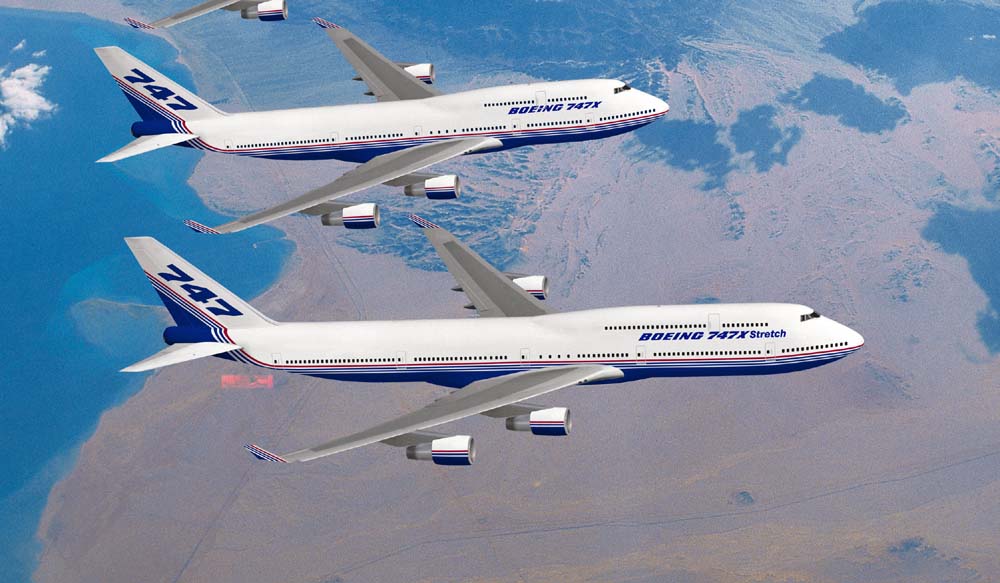
Cruise missile launcher: the CMCA
There have been several proposals to turn the 747 into a standoff weapons platform. From these, the Cruise Missile Carrier Aircraft (CMCA) project reached the most advanced stage.
Proposed in 1980 the project would see 747-200 fitted with large internal storage capable of holding over 70 AGM-86 cruise missiles, more than three times the amount that can be carried on the B-52 bomber. The CMCA also offered greater range and cheaper operational costs than could be provided by any USAF bomber.
However, the project was cancelled in the mid-1980s in favor of the B-1 Lancer, a dedicated supersonic bomber with a number of advantages over a repurposed civilian platform.
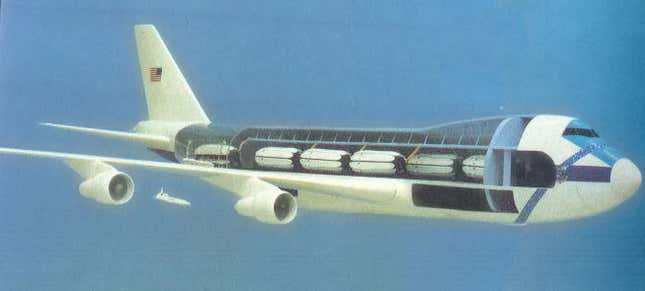
Supersized 747: the external cargo pod
In the late 1970s NASA hired Vought Corporation to study the feasibility of transporting outsized loads, such as tanks and other heavy vehicles, onboard the 747. The idea was to extend the aircraft’s cargo bay as well as making loading and unloading procedures more convenient.
Modifying the airframe was not an option, so Vought proposed the addition of a huge cargo pod underneath the aircraft. The pod would come with its own landing gear and two sets of doors that could facilitate the quick loading of cargo.
However, Vought’s study showed that the concept would also completely mess up the aircraft’s flight characteristics. The benefits of such an arrangement, especially choosing this option over the already available Lockheed C-5 Galaxy, were presumably not great enough, and so the project was discontinued.
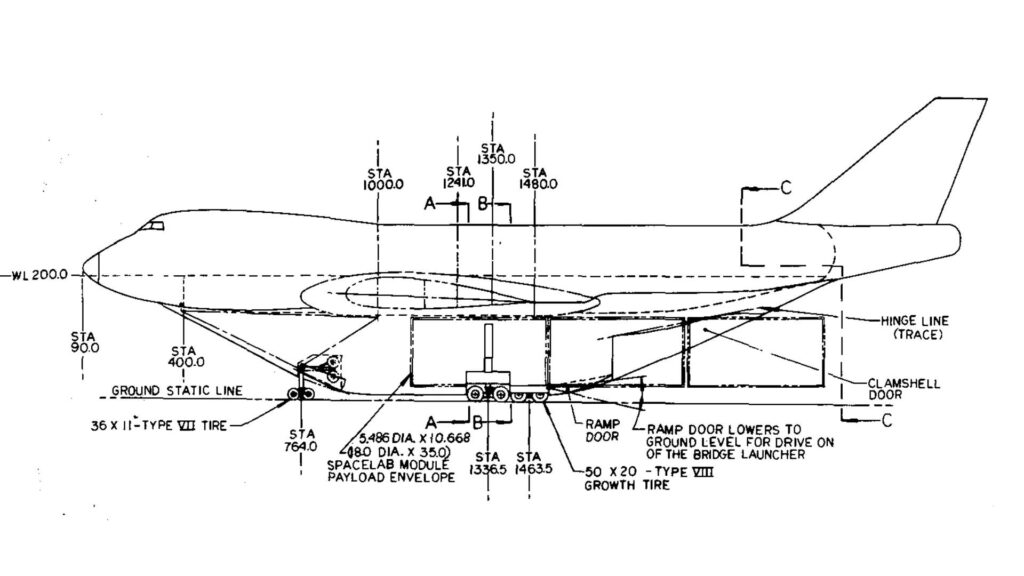
Ballistic missile launcher: the MC747
Another proposed idea for militarizing the 747 was to turn it into a ballistic missile carrier, the MC747. A step above the idea to create a cruise missile launcher, it would see the 747 carrying four Minuteman III nuclear missiles on constant patrol with the ability to launch them in-flight by dropping them through a rear cargo door.
Such an arrangement would extend the range of the missile, as well as offer the US a nuclear attack option, which is less vulnerable than static silos.
While the USAF reportedly ordered Boeing to study the concept in the 1970s, the study was not followed up by further work.
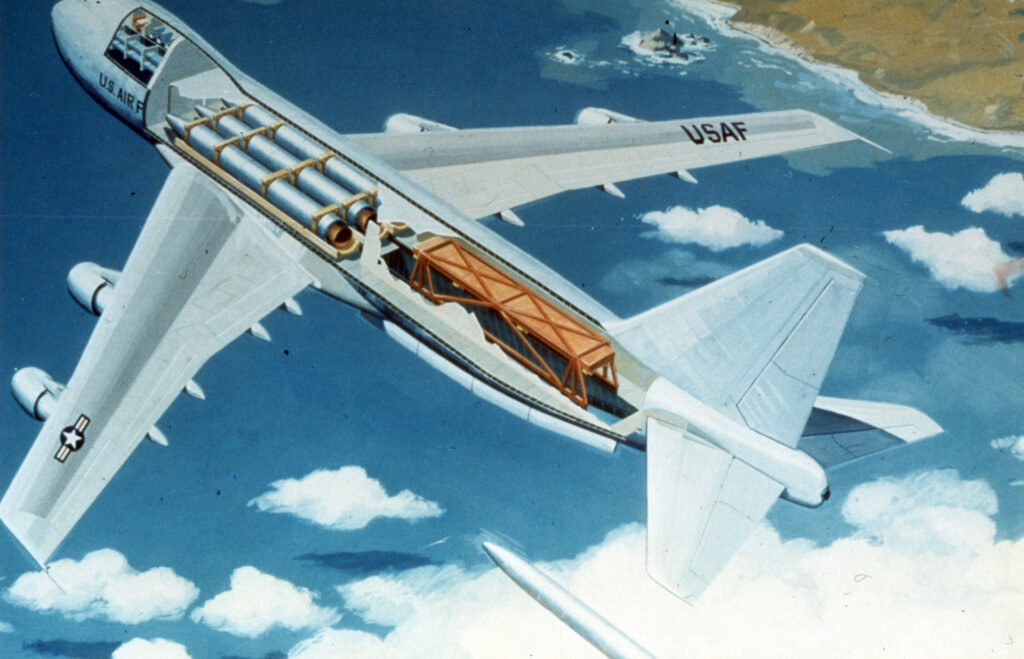
Flying aircraft carrier: the 747-AAC
Boeing investigated another attempt at militarizing the 747 in the 1970s, this time with the aim of turning it into an aircraft carrier. Acting similarly to US Navy carriers, the 747-AAC was expected to patrol the skies and allow the US to project air power anywhere in the world in a matter of hours.
The jet’s spacious interior was to house a cargo bay with up to 10 ‘microfighters’, small jets that could be deployed through two cargo doors and retrieved at the end of their mission.
But the proposal did not go beyond a feasibility study and was most likely rejected due to high costs and the relatively modest performance of the microfighters when compared to regular fighter jets.
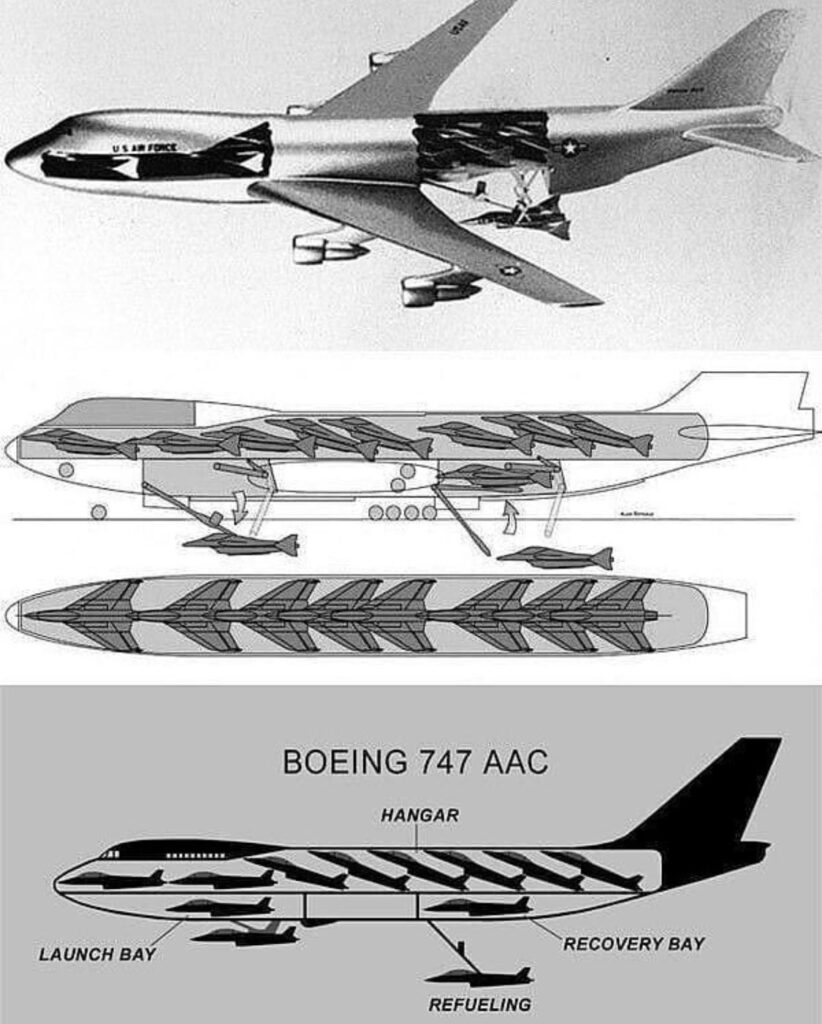
Trijet: the 747-300
The 747 became a success for Boeing. But throughout the 1970s, Lockheed and McDonnel Douglas continued to rack up orders with their slightly smaller competitors: the L-1011 TriStar and the MD-10 trijets.
Boeing also wanted to break into that market, making several attempts at offering the 747-300, a three-engine configuration of the Queen of the Skies.
The aim of the aircraft was to essentially become a regular 747 with a shortened fuselage, new tail and revamped wings. However, the redesign required a lot of engineering effort, prompting Boeing to drop the idea.
Eventually Boeing introduced the shortened 747SP, which boasted four engines as well as a similar range and passenger capacity to the trijets.
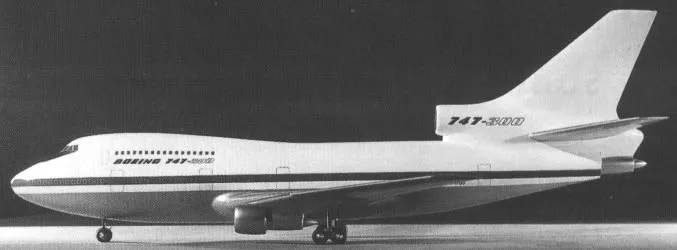
Aerial launch platform (with a rocket engine!)
The idea of replacing the first stage of a space rocket with a large aircraft has been around for some time. The famous Antonov An-225 Mriya was designed with the role in mind and, even today, a number of companies still conduct launches with repurposed airliners.
In the 1970s and 80s, the Boeing 747 was also considered for the role. Several feasibility studies were conducted, most of which focused on the idea of air-launching a small spaceplane.
However, the 747’s regular engines were not powerful enough for the task. A spaceplane large enough to carry a useful payload, plus the fuel to power it, would require the carrier to fly at higher altitudes, steeper climb angles and faster speeds than a regular 747 could manage with such a payload.
One proposed solution was to mount a powerful rocket engine onto the back of an airliner, while another would see the 747 equipped with new afterburning engines. While the ideas were considered feasible, they were never implemented.
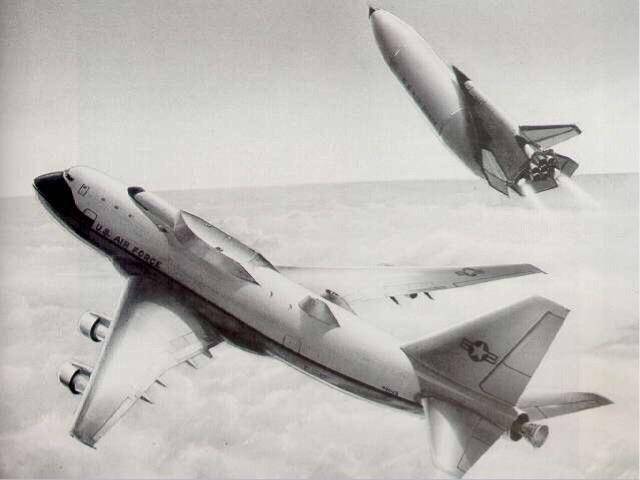
Double-decker (and a triple-decker)
The 747 was initially designed with a front-loaded cargo version in mind, which is why its cockpit was placed on top of the fuselage. A small second deck with a lounge was placed behind it for passenger comfort, with an option to turn it into another cabin.
The cabin was extended on later variants of the jet, resulting in the 747 becoming a ‘deck and a half’ aircraft.
Boeing considered extending the small deck all the way to the tail of the aircraft, turning the 747 into a true double-decker like the Airbus A380, on multiple occasions. One such proposal was made in the 1980s when Boeing was looking to build a competitor for the A380. However, similar ideas have been floated from as far back as during the design stage of the 747.
In addition, one radical way of extending the 747’s passenger capacity would see it with two passenger decks instead of one, sacrificing the cargo deck and turning the Queen into an almost triple-decker. It is unclear how seriously this proposal was taken, but several drawings of it can be found online.
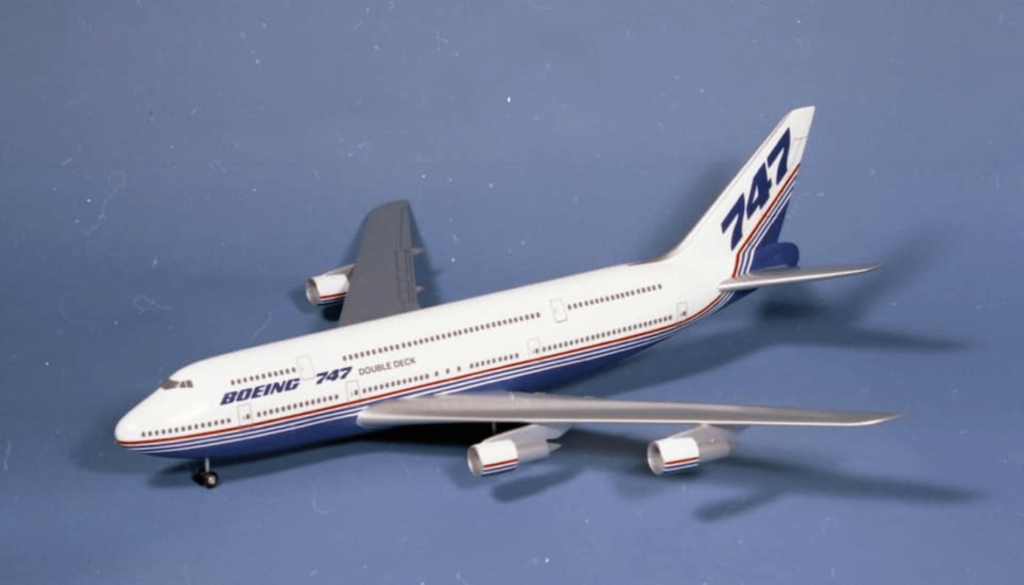
Twin (and triple) fuselage 747
Stratolaunch Roc is a twin-fuselage aircraft that reuses many of the 747’s components, but it is not an actual 747. However, the idea of simply splicing together two Queens of the Skies was also considered.
One such proposal came from the Conroy Virtus program, which sought to build an aerial launch platform by using a twin-fuselage Boeing 747, B-52 or Lockheed C-5. The program did not progress very far.
A study from the 1990s also considered a twin- and even a triple-fuselage 747 as a possible way to improve the aircraft’s passenger capacity. But it was more of a theoretical endeavor than a real proposal.
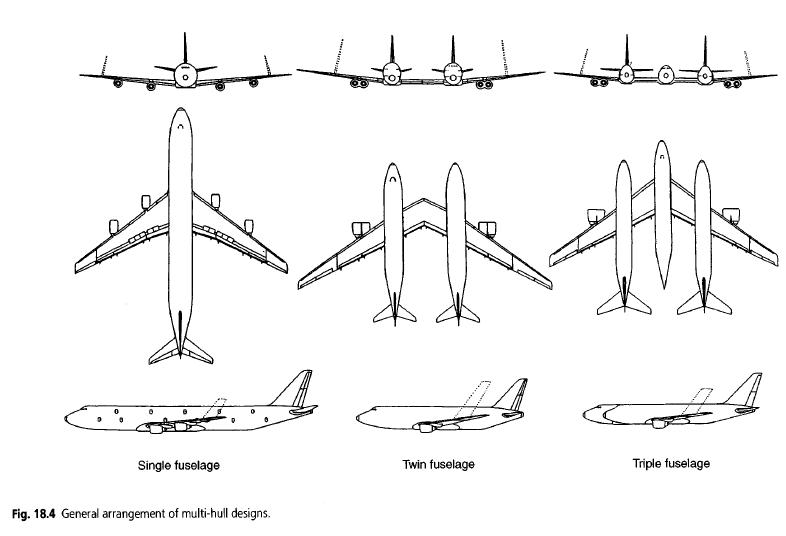
Flying wing: the 747-XL
Hands down, the strangest proposal involved a 747 fuselage being incorporated into a giant flying wing in an attempt to drastically increase the aircraft’s cargo capacity.
It was one of the ideas floated for NASA’s Spanloader program, an effort to design a gigantic flying wing transporter for the US military in the 1970s.
Using the 747 as a basis for the jet was just one of the early ideas that never seemed to progress. The program eventually settled on purpose-built aircraft, before being cancelled altogether.
The idea to convert an existing airliner into a giant flying wing is incredibly unique in the aviation world, and the fact that the Queen of the Skies was chosen for this proposal only serves to highlight just how versatile and adaptable an aircraft it is.
